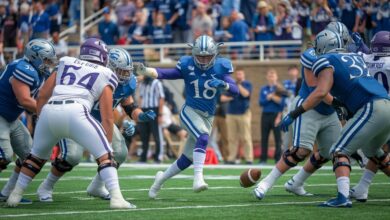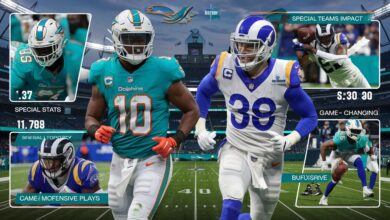Positions in Rugby: A Simple Guide to Every Player’s Role on the Field

Positions in Rugby are very important because each player has a special job on the field. Whether you are big and strong or small and fast, there is a perfect position for you. Knowing about different positions in rugby helps both players and fans enjoy the game more.
Rugby has 15 players in a team, and they are split into two main groups – Forwards and Backs. Forwards use their strength to push and tackle, while Backs use their speed to run and pass. Every position in rugby has a special role, and working together as a team is the key to winning!
What Are the Positions in Rugby? A Beginner’s Guide
Positions in rugby are the different roles players take on the field. Every player has a special job that helps the team win the game. Some players are strong and push hard, while others are fast and run with the ball.
A rugby team has 15 players, and they are divided into two groups – Forwards and Backs. Forwards use their strength to tackle and push, while Backs use speed and skill to create attacks. Each position is important, and teamwork makes a strong rugby team.
Learning about positions in rugby helps players know their roles better. Fans also enjoy the game more when they understand what each player is doing. No matter your size or skills, there is a place for everyone in rugby.
Forwards vs. Backs: Understanding the Two Main Player Groups
Rugby teams are split into Forwards and Backs, and each group has a different role on the field. Both groups must work together to play a great game.
Forwards are big, strong, and powerful. They tackle, push, and fight for the ball. Their main job is to win possession and keep the team moving forward. They are very important in scrums and lineouts.
Backs are fast, skillful, and smart. They pass the ball, make quick decisions, and score tries. Their job is to create space and use speed to attack the other team. They must be good at running and dodging defenders.
A good rugby team needs both strong Forwards and fast Backs. Without them, it is hard to win a game.
The Front Row Warriors: Props and Hooker Explained
The front row is made up of three strong players – two Props and one Hooker. They are the first line in the scrum and play a big role in the team’s success.
Props are big and strong. They stand on both sides of the Hooker and push hard in scrums. They also protect the ball and help their teammates stay safe.
The Hooker stands in the middle of the Props. This player has an important job of hooking the ball in scrums and throwing the ball in lineouts. A good Hooker needs to be quick and accurate.
These three players work as a unit. Without them, the team cannot have a strong scrum or good ball control.
Second Row Strength: The Important Role of Locks in Rugby

Locks are usually the tallest players on the team. They play a key role in scrums, lineouts, and rucks. Their strength and height help the team win important moments in the game.
Locks have two main jobs. First, they jump high in lineouts to catch the ball. Second, they push hard in scrums to give their team power. They must be strong, tall, and good at jumping.
These players help their team gain possession and control the game. Their role is physically demanding, but it is very important for the team’s success.
The Back Row Powerhouse: What Do Flankers and Number 8 Do?
The back row players are a mix of power and speed. They tackle, carry the ball, and support their teammates in attack and defence.
Flankers play on the sides of the scrum. They must be fast, strong, and good at stealing the ball. One Flanker plays on the blindside, and the other plays on the openside.
The Number 8 is a powerful player. They control the ball at the back of the scrum and make strong runs. A good Number 8 needs to be tough and smart.
Back row players are everywhere on the field. They work hard in attack and defence to help their team win.
The Playmakers: Scrum-Half and Fly-Half’s Role in Rugby
Scrum-Half and Fly-Half are two of the most important players in rugby. They control the game and make key decisions under pressure.
Scrum-Half is the link between Forwards and Backs. They pass the ball quickly from scrums and rucks, making sure the attack moves smoothly. This player must be fast and have good vision.
Fly-Half is the main playmaker. They decide whether to pass, run, or kick. A good Fly-Half must have great decision-making skills, strong kicking ability, and leadership.
Both players work together to guide their team. They are the brains of the game and must be sharp at all times.
Centres in Rugby: How Inside and Outside Centres Attack and Defend
Centres are strong and fast players who attack and defend in the middle of the field. They must have good handling skills and be able to break through the defence.
Inside Centre is a powerful runner and passer. They often carry the ball forward and create space for their teammates. Sometimes, they also kick to put pressure on the other team.
Outside Centre is the faster of the two. Their job is to find gaps in the defence and run through them. A great Outside Centre is quick and good at dodging tackles.
Both Centres work together to break down the opponent’s defence. Their strength and speed make them key players in attack.
Wingers in Rugby: The Speedy Try-Scorers of the Team
Wingers are the fastest players on the team. They play on the sides of the field and score most of the tries. Their main job is to finish attacks by running past defenders.
A good Winger must have:
- Speed: To outrun opponents and score tries.
- Agility: To change direction quickly and avoid tackles.
- Defence: To stop fast opponents from scoring.
Wingers can change the game with their quick moves. They must be alert and ready to take every chance to score.
Full-Back in Rugby: The Last Line of Defence and Attack
The Full-Back is one of the most important players on the team. They wear the number 15 jersey and play a key role in both defence and attack.
A Full-Back must be good at:
- Defence: Making strong tackles to stop attacks.
- Catching: Taking high balls safely under pressure.
- Kicking: Clearing the ball to help their team gain territory.
This player needs great vision to read the game well. A strong Full-Back can change the outcome of a match with smart decisions.
How to Choose the Best Position in Rugby for Your Skills

Choosing the right position depends on your skills and body type. Every position has a special role, and finding the right one helps you enjoy the game more.
If you are big and strong, you might be a great Prop, Lock, or Number 8. These positions require power and toughness.
If you are fast and agile, Winger or Full-Back could be perfect for you. These players need speed and quick thinking.
If you love passing and making smart plays, you may fit best as a Scrum-Half or Fly-Half. These positions require skill and leadership.
No matter your size or experience, there is a position in rugby for you. Find the best role and enjoy playing the game!
Conclusion
Rugby is a game for everyone, no matter your size or skills. Every player has a special role, and all positions in rugby are important for the team to win. Forwards use their strength to push and tackle, while Backs use speed and skill to score tries.
If you want to play rugby, choose a position that matches your strengths. Whether you are strong, fast, or smart with the ball, there is a place for you. Learn, practice, and have fun playing this exciting sport!
FAQs
Q: How many positions are there in rugby?
A: There are 15 positions in rugby, divided into Forwards and Backs. Each player has a different role in attack and defence.
Q: What is the most important position in rugby?
A: Every position is important! But the Fly-Half, Scrum-Half, and Forwards play key roles in controlling the game.
Q: What position should I play in rugby?
A: It depends on your skills! If you are strong, try playing as a Prop or Lock. If you are fast, you might be a great Winger.
Q: What does a Scrum-Half do in rugby?
A: The Scrum-Half passes the ball from scrums and rucks. They make quick decisions to help the team attack.
Q: Why are Forwards and Backs different in rugby?
A: Forwards use power to win the ball, while Backs use speed and skill to score tries. Both groups work together to win the game.




